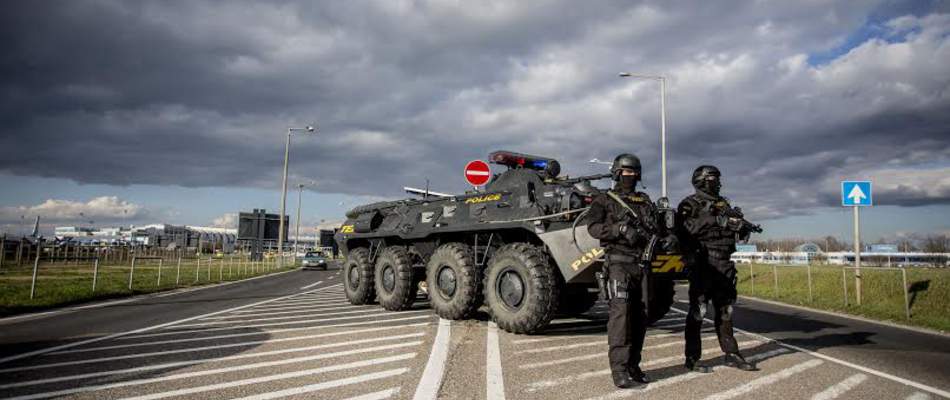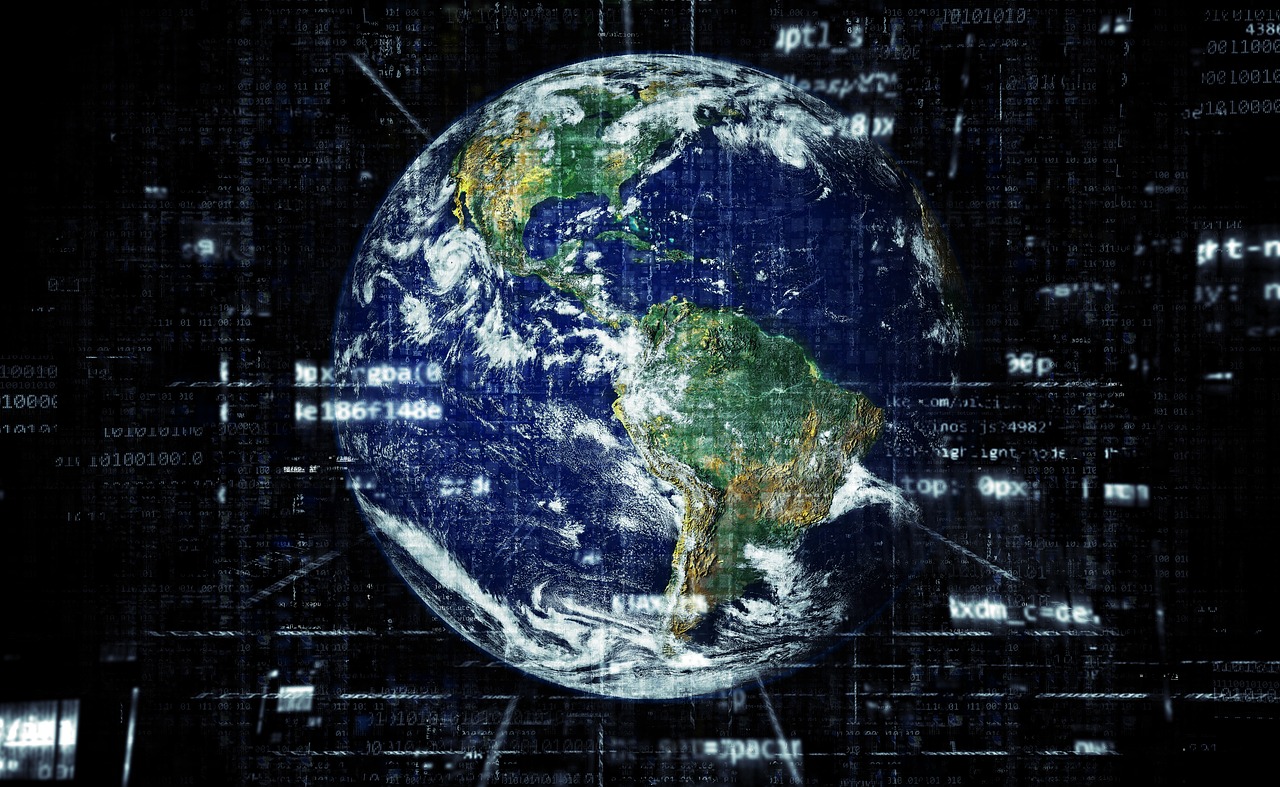“We live in the age of networks” – Insights from the President of Pallas Athéné Geopolitical Foundation
According to GLOBS Magazine, in this modern age, networks are ubiquitous. Anyone who works on a computer essentially relies on a workplace connection to perform any type of task. We also use a network, often the very same information and communication network, to make telephone calls.
When we turn on our personal computers at home on the weekend or in the evening, we log on to the network of networks: the Internet. The energy needed to power these devices comes from yet another network, the electrical grid. Our drinking water and the gas used to heat our homes also come from networks. We also use networks of roads and railways to go visit friends. Modern life could not exist without networks, so the concept of network is often instinctively associated with modernity, while in fact networks have always been pre-sent throughout humanity. Water pipeline networks already existed more than 4,000 years ago in Mohenjo-Daro, and roads, or at least networks of paths and routes, are also as old as humanity itself.
Ubiquitous networks have therefore always been important. But they have become far more important nowadays as increasingly sophisticated networks have emerged and spread in the realm of technology. While networks found in nature developed organically and function almost imperceptibly by themselves, man-made networks must be designed and rendered functional by us.
This requires the understanding of how networks function, as the better we understand them, the be er we are able to create effective structures that support our objectives.
The Growing Significance of Networks
The network-like interconnectedness, linkage and functioning of things has thus become increasingly apparent with the emergence and spread of manmade technical networks. While our nervous system works even if we are unfamiliar with its architecture or functioning, or if we do not even think of it as a network, the same does not hold true for a computer network, which man must build and render operational. Networks multiply our power and our opportunities. Just like a group of people of a certain size can achieve more as a cooperative community compared to a set of individuals thinking and working in an isolated manner, the capabilities and opportunities of our technical equipment are also multiplied when they are configured into networks.
In other cases, the network itself is what gives rise to a function. Just think of the electronics that control cars.
The sensors and controllers located in various points of a vehicle are unable to execute the same functions independently as tied together into a network, when information from various points of measurement can be interpreted as a function of the other values. Engine speed may be high or low depending on whether we are accelerating or braking. In a situation like this, information from various points of the network must be collected and processed to give the right control response.

Norbert Csizmadia, President of Board of the Pallas Athéné Geopolitical Foundation
Once technical designers started thinking in terms of and dealing with networks, an increasing body of network-related knowledge and experience was amassed. With the emergence and spread of technical networks and the rise of network-based thinking, we started noticing networks in other places as well. In order to design and build technical networks, network models had to be developed, in other words, a descriptive language and mental framework had to be created for correctly modeling networks.
With the spread of networks and by leveraging this new knowledge, networks or network-like functioning has been discovered in other areas, as a result of which network models have become decoupled from specific, concrete technology and become more abstract and generally applicable, and a new science of networks has been born and continues to evolve. This step has allowed us to investigate the logic, features and functioning of networks in an abstract manner, independent from the associated technology or other media such as the nervous system. This has allowed us to distinguish the features stemming from network architecture itself from the features inherent to the physical embodiment of the network in the study of network functioning.
Abstraction enables the computerized modeling of networks, the computerized simulation of their functioning and further improves our capacity to understand networks and deepens our knowledge of them. This greater understanding in turn creates a positive feedback that makes the learning process self-reinforcing. We are building be er and be er networks and are gaining a deeper understanding of phenomena (including natural phenomena) with network-like functioning, for instance in the realm of biology and even human relationships. This process is far from complete. Networks are popping up in more and more places around us, but there still remain untapped areas. The technology for using networks is often already available, for example in living areas or on clothing, but their use has not yet truly taken off.
After the age of the steam engine, the internal combustion engine, electronics and the computer, we now live in the age of networks.
Networks Everywhere
What makes a network a network? How can we recognize networks? A network is determined by its unique structure, which is fundamentally very simple. Networks consist of a set of nodes that connect to each other in some way. These nodes and the links between them are diverse and thus so are the networks themselves. Networks immediately bring to mind office computer networks and the network of networks, the Internet. But computer networks also exist in places where we do not see them. Networks based on programmable logic circuits are nearly ubiquitous nowadays in production control and building control. Modern vehicles are also controlled by computer networks. Communication networks are similar to computer networks, as telephone networks and telecommunication have become inextricably intertwined with the Internet with the rise of digital technology.
The public utility networks that we all use day-to-day, such as electrical grids, water or natural gas pipeline networks, are also based on network logic. Transportation routes and communities, urban road networks, public roads, railways, shipping routes and airways also form networks. In terms of the diversity of communication and computer networks, they can take on many different forms and be interpreted in many different ways. For instance, the Open Systems Interconnection (OSI) model used to describe the various layers of computer networks describes seven different layers of computer networks. The same physical network is examined from a different perspective at every level of the model, each perspective yielding a different logical network. In one case, the network’s nodes are elements and parts of an electrical circuit and its links are the connecting wires. In another case, the nodes are the software running on one or several different computers and the links are the interfaces between them. The exact content of the various layers is not relevant in terms of the networks.
The essence is that anything that is logically a network or exhibits network-like behavior, anything that can be described with network-like features can take on many different physical forms, in other words the nodes and their links are not necessarily tangible or visible. Why is this relevant? Because this shows that networks are far more ubiquitous than we think. Even human relationships can be described as networks and analyzed broken down into different layers, just like computer networks. The lower layer could be the people we could theoretically reach because we have their telephone number in our address book.
The next layer could be the people we know personally.
Higher layers could represent the level or type of acquaintance, or the contents of interpersonal relationships. The economy can also be seen as a network, with economic agents constituting its nodes linked via various connections. For instance if we try to represent a macroeconomic model graphically, to explain the relationship between a model’s elements using a figure, we obtain a figure very similar to electrical circuit models not only because macroeconomic models were in fact inspired by technical models, but also because both follow the same network logic.
Written by Norbert CSIZMADIA, President of Board of the Pallas Athéné Geopolitical Foundation
Source: GLOBS Magazine
please make a donation here
Hot news
Top Hungary news: train derailed, huge tax against short-term rentals, new train stations, Hungarians about the war, Dracula, cocktail bars — 21 October, 2024
Hungarian research could yield breakthrough in Covid-19 treatment
5+1 stylish cocktail bars in Budapest to explore with your friends after a long day
Railway stations in major Hungarian cities to be completely rebuilt with private capital
Young people planning armed attacks against protected persons in Hungary – US intelligence warns
Hungary, Laos agriculture ties strengthening: Minister Linkham Duangsavanh visits Budapest





